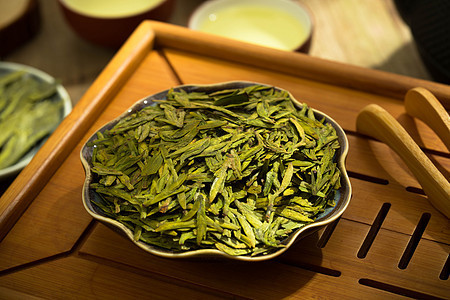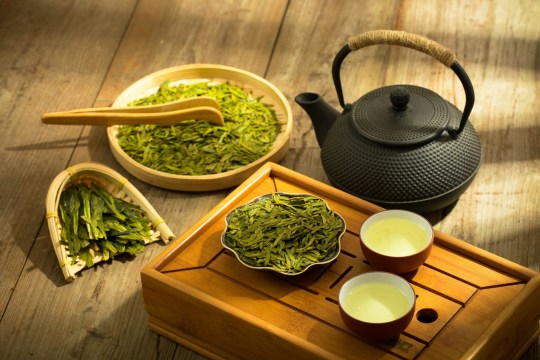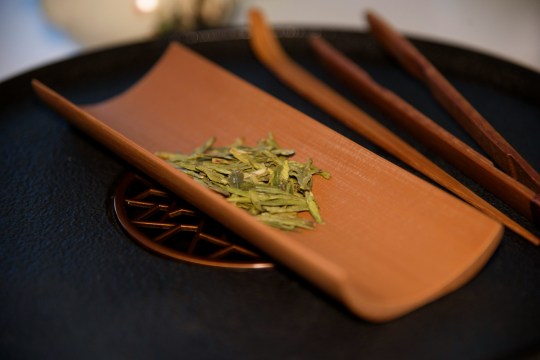#unoxidize
Explore tagged Tumblr posts
Text
great. I've been drinking bad apple juice
#bridget.txt#I was wondering why I was feeling sick and??? my apple juice that I got the other day is brown which means it's unoxidized and toxic#fanfuckingtastic
0 notes
Note
i hope you know copper retriever and unoxidized puppies has permanently improved my life
Glad to hear it 🐕💚🧡
151 notes
·
View notes
Text

Ametrine is a bi-coloured purple and yellow quartz, a portmanteau of amethyst and citrine. Its distinctive colouration comes from trace amounts of iron in the crystal structure, like amethyst, and differing states of oxidation, with the purple segments being unoxidized, and yellow oxidized, typically by heat. Ametrine attack









13 notes
·
View notes
Text
The hermits I watch and which minecraft blocks I associate with them! Some are obvious, others aren't.
Bdubs: moss (duh), diorite, stripped spruce, green bed, black candles
Cleo: cracked stone bricks, lime terracotta, dark oak log, colored glass (but specifically all the colors in a rainbow formation)
Etho: stripped oak, slime piston, light grey glass panes
Gem: birch log (duh), prismarine, gravel, glass (the uncolored one)
Grian: quartz (S6 iykyk), sand, TNT
Impulse: yellow concrete, honey blocks, water (is that a block?)
Mumbo: smooth stone, redstone block, iron door, tall grass (is that a block? x2)
Pearl: acacia plank, pink terracotta, rooted dirt, mud
Scar: oak log, oak trapdoor, unoxidized cut copper, warped door
Tango: crimson planks, iron block, polished blackstone
Zedaph: pink wool, white concrete, barrels
#hermitcraft#bdoubleo100#bdubs#zombiecleo#zombie cleo#etho#ethoslab#geminitay#grian#impulse#impulsesv#mumbo#mumbo jumbo#pearlescentmoon#goodtimeswithscar#goodtimewithscar#tangotek#tango#zedaph#i tried not to repeat any block between hermits so thats why some obvious ones may be missing#i put them with the hermit i associted with it the MOST
153 notes
·
View notes
Text
5 Essential Tips for Brewing Chinese Green Tea: A Beginner’s Guide

Introduction
Welcome to the world of Chinese green tea! Whether you’re new to this beverage or looking to refine your brewing skills, this guide provides practical tips to help you brew the perfect cup. From selecting high-quality leaves to mastering brewing techniques, you’ll learn how to enjoy a fragrant and delicious cup every time. Green tea is not only known for its subtle flavors but also its numerous health benefits, making it a great choice for both refreshment and wellness.
Understanding Chinese Green Tea
What is Chinese Green Tea?
Chinese green tea is celebrated for its delicate flavors and numerous health benefits. Unlike black tea, which undergoes fermentation, green tea is made from unoxidized leaves and is minimally processed. This method helps retain the tea’s natural antioxidants and nutrients, which can contribute to better heart health, improved brain function, and weight management.

Types of Chinese Green Tea
China offers a diverse range of green teas, each with unique flavor profiles and brewing requirements. Here are some popular varieties:
Longjing Tea: Known for its sweet, nutty flavor and flat, sword-shaped leaves. This tea is often praised for its smooth and mellow taste, making it a favorite among tea enthusiasts.
Biluochun Tea: Famous for its fruity and floral aroma with tightly curled leaves. This tea provides a refreshing and complex flavor experience that is both delicate and invigorating.
Huangshan Maofeng Tea: Features a delicate floral taste with a hint of chestnut. Its light and fragrant profile makes it ideal for those who appreciate a subtle yet flavorful brew.
Selecting Quality Green Tea
Choosing the Right Tea Leaves
To brew a flavorful cup, start with high-quality leaves. Opt for whole, unbroken leaves as they generally offer better flavor and aroma. Vibrant green leaves usually indicate high quality and freshness. Look for tea that has been recently harvested and processed, as this often results in a more vibrant and aromatic brew.
Where to Buy Quality Green Tea
Purchase your tea from reputable merchants or specialty stores. At Orient Eco Tea , we work with over 30 top-quality producers in China to offer you the finest options, handpicked and directly sourced. Our curated selection ensures that you receive only the best green teas available, directly from their origins.
Brewing Techniques
Essential Equipment
To brew Chinese green tea, you’ll need:
Tea Leaves: Fresh and high-quality. Investing in high-quality leaves can significantly enhance your tea-drinking experience.
Teapot or Gaiwan: Traditional Chinese brewing vessels that help maintain the optimal temperature for steeping. A gaiwan is especially useful for its versatility and ease of use.
Filtered Water: To avoid impurities that can affect flavor. Using filtered water ensures that the true taste of the tea is preserved.
Tea Strainer: If using loose leaves. A good strainer will help prevent any small particles from ending up in your cup.

Brewing Temperature and Time
The ideal brewing temperature for green tea is between 160-180°F (70-80°C). Water that’s too hot can make the tea taste bitter. Steep the leaves for 1-3 minutes, adjusting based on your taste preference. For a more delicate flavor, start with a shorter steeping time and gradually increase as needed.
Steps to make a perfect cup of Chinese green tea
Preheat Your Teapot: Pour hot water into the teapot, swirl it to warm the vessel, then discard the water. This step helps maintain the temperature throughout the brewing process.
Measure the Tea Leaves: Use about 1 teaspoon of leaves per 8-ounce cup. Adjust the amount based on your taste preference and the type of green tea.
Add Water: Pour hot, filtered water over the leaves. The water should be at the correct temperature to avoid scalding the leaves.
Steep: Let the tea steep for 1-3 minutes. Keep an eye on the color of the brew to determine when it’s ready.
Strain and Serve: Remove the leaves and pour the tea into cups. Enjoy your freshly brewed tea.
Tips for an Optimal Experience
Experiment with Ratios
Adjust the amount of leaves and brewing time according to your taste. Some varieties may require more or less time to reach their optimal flavor. Experiment to find your perfect balance and discover the nuances of different teas.
Rebrew the Leaves
Many green teas can be brewed multiple times. Each infusion provides a different flavor experience, so don’t hesitate to re-steep the leaves. This can also help you appreciate the full spectrum of flavors in your tea.
Proper Storage
To preserve freshness and flavor, store leaves in an airtight container, away from light, heat, and moisture. Proper storage ensures that your tea remains as vibrant and flavorful as when you first purchased it.
Conclusion
Brewing Chinese green tea is an art that blends tradition with personal taste. By following these tips and exploring different types of tea, you can enjoy a perfect cup every time. For premium options and detailed information, visit Orient Eco Tea . Our selection features top-grade teas sourced directly from China’s finest producers.
Additional Resources
For more insights into tea varieties and brewing techniques, check out Tea Enthusiast’s Guide . This resource offers comprehensive information to deepen your understanding and appreciation of different teas.
Reprinted with permission from Orient Eco Tea, original link: [https://www.orientecotea.com](https://www.orientecotea.com).
4 notes
·
View notes
Text
Tea combos that are hot:
Oolong+florals
Green tea + jasmine
Mint+ rose
Black tea + orange
Tea combos that are NOT
Mint+ green tea
(Rage ramble under cut)
Green tea is often dismissed as bitter when in actuality it’s the steeping temperature that gets you. As it is an unoxidized tea, it should be steeped around 80°c/178°f. This is just below boiling. Steeping in boiling water causes the tea to “burn” and become bitter. At the right temp it’s actually quite mild and smooth!
Mint tea, on the other hand, is an herbal. Herbal teas are best steeped in boiling water as they can be quite light and have hardier flavor profiles not destroyed by hotter water.
TL,DR: I had a mint-green tea today and it tasted like soap. 👎
Do not recommend.
#tea time?#can I tag this as tea time?#rambles#over-opinionated#herbal tea#herbalism#I know too much about this
1 note
·
View note
Text
Germicidal UV lights could be producing indoor air pollutants, study finds
While useful for killing pathogens including SARS-CoV-2, the lights may cause unwanted chemical reactions and should be used with ventilation, researchers say.
David Chandler | MIT News

Many efforts to reduce transmission of diseases like Covid-19 and the flu have focused on measures such as masking and isolation, but another useful approach is reducing the load of airborne pathogens through filtration or germicidal ultraviolet light. Conventional UV sources can be harmful to eyes and skin, but newer sources that emit at a different wavelength, 222 nanometers, are considered safe.
However, new research from MIT shows that these UV lights can produce potentially harmful compounds in indoor spaces. While the researchers emphasize that this doesn’t mean the new UV lights should be avoided entirely, they do say the research suggests it is important that the lights have the right strength for a given indoor situation, and that they are used along with appropriate ventilation.
The findings are reported in the journal Environmental Science and Technology, in a paper by recent MIT postdoc Victoria Barber, doctoral student Matthew Goss, Professor Jesse Kroll, and six others at MIT, Aerodyne Research, and Harvard University.
While Kroll and his team usually work on issues of outdoor air pollution, during the pandemic they became increasingly interested in indoor air quality. Usually, little photochemical reactivity happens indoors, unlike outdoors, where the air is constantly exposed to sunlight. But with the use of devices to clean indoor air using chemical methods or UV light, “all of a sudden some of this oxidation is brought indoors,” triggering a potential cascade of reactions, Kroll says.
Initially, the UV light interacts with oxygen in the air to form ozone, which is itself a health risk. “But also, once you make ozone, there’s a possibility for all these other oxidation reactions,” Kroll says. For example, the UV can interact with the ozone to produce compounds called OH radicals, which are also powerful oxidizers.
Barber, who is now an assistant professor at the University of California at Los Angeles, adds, “If you have volatile organic compounds in the environment, which you do basically in all indoor environments, then these oxidants react with them and you make these oxidized volatile organic compounds, which in some cases turn out to be more harmful to human health than their unoxidized precursors.” The process also leads to the formation of secondary organic aerosols, she says. “Again, this stuff is harmful to breathe, so having it in your indoor environment is not ideal.”
The formation of such compounds is particularly problematic in the indoors, Kroll says, because people spend so much of their time there, and low ventilation rates can mean these compounds could accumulate to relatively high levels.
Having studied such processes in outdoor air for years, the team had the right equipment in hand to observe these pollution-forming processes indoors directly. They carried out a series of experiments, first exposing clean air to the UV lights inside a controlled container, then adding one organic compound at a time to see how they each affected the compounds that were produced. Although further research is needed to see how these findings apply to real indoor environments, the formation of secondary products was clear.
The devices that make use of the new UV wavelengths, called KrCl excimer lamps, are still relatively rare and expensive. They’re used in some hospital, restaurant, or commercial settings rather than in homes. But while they have sometimes been touted as a substitute for ventilation, especially in hard-to-ventilate older buildings, the new study suggests that’s not appropriate. “Our big finding was that these lights are not a replacement for ventilation, but rather a complement to it,” says Kroll, who is a professor of civil and environmental engineering, and of chemical engineering.
Some have proposed that with these devices, “maybe if you could just deactivate the viruses and bacteria indoors, you wouldn’t need to worry about ventilation as much. What we showed is that, unfortunately, that’s not necessarily the case, because when you have less ventilation, you get a buildup of these secondary products,” Kroll says.
He suggests a different approach: “There may be a sweet spot in which you’re getting the health benefits of the light, the deactivation of pathogens, but not too many of the disbenefits of the pollutant formation because you’re ventilating that out.”
The results so far are from precisely controlled lab experiments, with air contained in a Teflon bag for testing, Barber points out. “What we’re seeing in our bag is not necessarily directly comparable to what you would see in a real indoor environment,” she says, “but it does give a pretty good picture of what the chemistry is that can happen under radiation from these devices.”
Goss adds that “this work allowed us to validate a simple model that we could plug in parameters to that are more relevant to actual indoor spaces.” In the paper, they use this information “to try to apply the measurements we’ve taken to estimate what would happen in an actual indoor space.” The next step in the research will be to attempt follow-up studies taking measurements in real-world indoor spaces, he says.
“We’ve shown that these are a potential concern,” Kroll says. “But in order to understand what the full real-world implications are, we need to take measurements in real indoor environments.”
“These 222-nanometer radiation devices are being deployed in bathrooms, classrooms, and conference rooms without a full accounting of the potential benefits and/or harm associate with their operation,” says Dustin Poppendieck, a research scientist at the National Institute for Standards and Technology, who was not associated with this study. “This work lays the foundation for a proper quantification of potential negative health impacts of these devices. It is important this process is completed prior to relying on the technology to help prevent the next pandemic.”
The work was supported by the National Science Foundation, the Harvard Global Institute, and an NIEHS Toxicology Training Grant.
2 notes
·
View notes
Note
I thought quartz that's both citrine and amethyst was called ametrine?
It can be called ametrine, trystine or bolivianite.
Truth be told Amethyst and citrine are extremely similar gems to the point that the majority of citrine sold out there is heated amethyst.
So it's not surprising a mixture of the two exists naturally.
What happens is that citrine has oxidised iron while the amethyst has iron unoxidized.
:D
2 notes
·
View notes
Photo
Welding autism brain switch on: So the reason it happens like this is because the aluminum plug was dirty and oxidized. Aluminum oxide has a MUCH higher melting point than raw aluminum, but it oxidizes with exposure to atmosphere extremely quickly. So the outside is taking so long to heat up that the interior unoxidized aluminum was already molten inside the hard shell of oxide, once it breached the shell it all just falls out. Then some fucky physics stuff happens and it loses its magnetism in liquid phase for some reason beyond me.
If they had scrubbed the aluminum pill first to remove the oxide I wonder what would happen...

Melting aluminum with an electromagnet.
527K notes
·
View notes
Text
Does Green Tea Help with Weight Loss? The Truth Revealed
If you’ve ever searched for natural ways to lose weight, chances are green tea popped up more than once. It’s often praised as a miracle drink for burning fat, boosting metabolism, and helping you shed those extra kilos. But how much of that is true? And more importantly—can sipping green tea alone really help you lose weight?
Let’s break down the facts in a simple, honest way, without the fluff. Whether you’re a long-time tea lover or just getting into healthy habits, this article will help you understand where green tea stands in your weight loss journey.

What’s So Special About Green Tea?
Green tea is made from the unoxidized leaves of the Camellia sinensis plant. It’s rich in antioxidants, especially catechins, the most famous one being EGCG (epigallocatechin gallate). This compound is largely responsible for green tea’s many health claims—including its role in weight loss.
But before we dive into the benefits, let’s set the record straight: green tea alone won’t magically melt away fat. However, it can be a helpful partner when combined with a balanced diet, exercise, and healthy habits.
1. It Boosts Your Metabolism (a Little Bit)
One of the most widely recognized benefits of green tea is its ability to slightly increase metabolic rate.
Your metabolism is how your body converts food into energy. A faster metabolism means your body burns more calories, even while at rest.
Studies suggest that the catechins and caffeine in green tea may work together to enhance fat oxidation—especially during moderate exercise. One study found that people who consumed green tea extract burned about 3–4% more calories over a 24-hour period.
Now, that may not sound like a lot, but over time, it can add up.
2. It Supports Fat Burning During Exercise
Green tea might be even more effective when paired with physical activity. Research indicates that people who consume green tea before working out may experience greater fat burning, especially around the belly area.
Why? Because green tea enhances your body’s ability to use fat as fuel, particularly during cardio workouts. So, if you’re hitting the gym or going for a walk, a warm cup of green tea before your session might give your fat-burning efforts a little extra nudge.
3. It Helps Regulate Blood Sugar & Cravings
Blood sugar spikes can lead to sudden hunger pangs and overeating. The good news? Green tea helps balance blood sugar levels, which in turn keeps cravings in check.
That means fewer late-night snack attacks and more control over your appetite. Also, green tea can make you feel fuller between meals, reducing the urge to reach for sugary snacks or processed foods.
So, while it’s not a full appetite suppressant, it gently encourages mindful eating—which is crucial for weight loss.
4. It Has Zero Calories (If You Skip the Sugar)
Here’s a practical advantage: green tea is virtually calorie-free if you don’t load it with sugar or cream.
Replacing high-calorie beverages like sodas, sugary lattes, or even packaged fruit juices with green tea can make a real difference in your daily calorie intake. Just imagine swapping a 200-calorie drink with a 2-calorie cup of green tea. Over time, those savings help create the calorie deficit needed for weight loss.
5. It Supports Overall Wellness
Weight loss isn’t just about numbers on a scale. It’s also about how you feel—your energy levels, digestion, and mood. Green tea contains L-theanine, an amino acid that works with caffeine to give you a calm, focused boost without the jitters.
This can help reduce stress-related snacking and improve your mental clarity throughout the day. The antioxidants also support your digestion and may reduce bloating, making you feel lighter and more comfortable in your body.
So, What’s the Catch?
Now, before you go chugging a whole kettle of green tea—let’s keep it real.
Drinking green tea won’t replace a balanced diet or regular exercise.
Results vary based on body type, metabolism, and lifestyle.
Drinking more than 3–4 cups a day might cause side effects like insomnia or stomach upset (especially if you're sensitive to caffeine).
The bottom line? Green tea isn’t a magic potion, but it’s a smart, supportive habit to include in your routine—especially if you enjoy its fresh flavor and calming vibe.
How to Make the Most of Green Tea for Weight Loss
Here are a few tips to help you use green tea wisely:
Drink it 30–60 minutes before meals to help with appetite control.
Have a cup before a workout to enhance fat burning.
Choose pure, high-quality green tea (preferably organic) to get the most antioxidants.
Avoid adding sugar or sweeteners—if needed, try lemon or a drop of honey.
Be consistent. Results won’t come overnight.
Final Verdict: Is Green Tea Worth It?
Yes—green tea can support your weight loss goals, but only if you’re also eating well, moving your body, and getting enough rest. Think of it as a team player—not the star of the show, but one that definitely helps you win the game.
Even if you don’t lose weight right away, the other benefits—like improved digestion, energy, and focus—make green tea a valuable addition to your daily routine.
So go ahead, sip smart, and let nature work its magic—with Marvel Tea.
0 notes
Text
Introduction about Green Tea
Green Tea has long been celebrated for its numerous health benefits, cultural significance, and refreshing taste. Originating in China over 4,000 years ago, this tea has traveled across continents and centuries to become a staple in many households worldwide. Unlike black tea, green tea is made from unoxidized leaves and is one of the least processed types of tea, which is why it contains the most antioxidants and beneficial polyphenols.
One of the main reasons people consume green tea is for its potential health benefits. Numerous studies suggest that it may help in boosting metabolism, supporting weight loss, and even reducing the risk of heart disease. The primary antioxidant found in green tea, known as EGCG (epigallocatechin gallate), plays a significant role in these effects. EGCG helps in reducing inflammation and has been linked to improved brain function, fat loss, and a lower risk of chronic diseases.
In addition to its internal health benefits, green tea also contributes to skin health. It is a common ingredient in beauty and skincare products due to its ability to fight free radicals, reduce acne, and soothe irritated skin. Many people also use chilled green tea bags to reduce under-eye puffiness and dark circles. Drinking green tea regularly can give your skin a healthy glow from the inside out.
Culturally, green tea holds a special place in various Asian traditions. In Japan, for example, the tea ceremony, or “Chanoyu,” is a highly ritualized practice centered around the preparation and consumption of matcha, a powdered form of green tea. This ceremony is not just about drinking tea but also about mindfulness, harmony, and respect. In China, green tea is offered to guests as a sign of hospitality and is often served during family meals and social gatherings.
When it comes to varieties, green tea offers a wide range of options. From the grassy notes of Sencha to the nutty flavor of Genmaicha, and the rich, creamy texture of matcha, there is something for every palate. Brewing it correctly is essential to get the best flavor. Typically, green tea should be steeped in water that is around 160–180°F (70–80°C) for 2–3 minutes. Overheating or over-steeping can result in a bitter taste.
In conclusion, green tea is more than just a beverage. It is a symbol of health, culture, and tradition. Whether you drink it for its antioxidants, enjoy it as part of a daily ritual, or appreciate its role in global cultures, green tea continues to be a beloved choice for millions of people. With its countless benefits and rich history, it’s easy to see why green tea remains a timeless classic in the world of wellness and tea lovers alike.
1 note
·
View note
Text
Green Tea Recipe
Green Tea is a bright, refreshing drink made from unoxidized tea leaves, known for its light, earthy flavor and health benefits. Along with Earl Grey and Tulsi Tea, it’s one of my favorites to sip during the day. Enjoy it plain or lightly sweetened – perfect for a calming afternoon break. Learn how to make Green Tea just right for a soothing and rejuvenating cup. About Green Tea Our mornings…
0 notes
Text
Tea Shop Tales: Spotlight on Local and International Favorites
Introduction
Tea, that delicate infusion of leaves, has woven itself into the fabric of cultures around the world. From bustling tea shops in London to serene tea houses in Kyoto, every corner of the globe has its unique take on this beloved beverage. This article dives deep into the heart of tea culture with our feature: Tea Shop Tales: Spotlight on Local and International Favorites. Whether you're a seasoned tea connoisseur or a curious newcomer, join us as we explore diverse tea types, tantalizing tea drinks, and insightful tea reviews from various locales.
Exploring Tea Types: An Overview What Are the Major Tea Types?
When you think about tea types, what comes to mind? Black, green, white, oolong? Let’s break it down! The world of tea is vast and varied. Here’s a quick overview:
Black Tea: Fully oxidized and robust in flavor; often enjoyed with milk. Green Tea: Unoxidized and known for its grassy taste; rich in antioxidants. White Tea: Made from young buds; light and subtly sweet. Oolong Tea: Partially oxidized; a balance between black and green. Herbal Tea: Technically not "tea" as it doesn’t come from the Camellia sinensis plant but is brewed from herbs, fruits, or flowers.
Understanding these categories can enhance your experience at any tea shop.
Health Benefits of Different Tea Types
Did you know that each type of tea carries its own health benefits? For instance:
Black Tea: May boost heart health and improve cholesterol levels. Green Tea: Known for weight loss properties due to metabolism enhancement. White Tea: Contains anti-aging antioxidants. Oolong Tea: May aid in digestion. Herbal Teas (like chamomile): Great for relaxation and sleep.
A good cup of tea isn't just a treat; it’s also a health booster!
Local Favorites: The Best Regional Teas British Breakfast Blend
Ah, the quintessential British breakfast blend! Often a mix of Assam, Ceylon, and Kenyan teas, this spiritea shop robust drink is perfect for kickstarting your day. Served with milk or lemon, it's a staple found in many local UK tea shops.
South African Rooibos
This herbal delight hails from South Africa’s Cederberg Mountains. Naturally caffeine-free and rich in antioxidants, rooibos is gaining popularity worldwide. Many local shops offer interesting blends mixed with vanilla or citrus flavors.
Japanese Matcha
Matcha isn’t just a trend; it’s an art form! Ground from shade-grown green tea leaves, this vibrant green powder packs immense flavor and health benefits. Japanese tea ceremonies showcase matcha beautifully—it's all about mindfulness!
International Favorites: A Global Perspective on Tea Drinks Masala Chai from India
Who doesn't love a warm cup of masala chai? This spiced concoction combines black tea with ginger, cardamom, cloves, and milk—creating an aromatic experience that's simply irresistible.
Thai Iced Tea
1 note
·
View note
Text
Halloween idea:
Be the unoxidized Statue of Liberty in this slinky copper dress. For the first half of the party.
Sometime in the night I switch outfits into my minty/sage green swimsuit. Idk about the bottoms yet, nvm. Green lularoe pencil skirt/body con skirt - :0 I know and it really is buttery fkn soft for a ponzi scheme product- Ohhhh & green converse!!!!! Boom. The drama.
Das my idea ✌🏾
1 note
·
View note
Text
The Wonders of Green Tea: A Natural Elixir for Health and Vitality

Green tea is more than just a comforting beverage—it’s a nutrient-rich powerhouse packed with incredible health benefits of green tea. Whether it’s boosting metabolism or improving skin health, this natural drink has rightfully earned its place as a favorite among health-conscious individuals.
What is Green Tea?
Unlike other teas, green tea is made from unoxidized leaves, retaining its natural compounds and high levels of antioxidants. This minimal processing is what makes green tea for weight loss and overall wellness so effective.
Health Benefits of Green Tea
Boosts Metabolism and Aids Weight Loss A combination of catechins and caffeine in green tea for weight loss accelerates metabolism and enhances fat burning, making it a key choice for anyone on a weight management journey.
Rich in Antioxidants The antioxidants in green tea, especially EGCG (epigallocatechin gallate), combat harmful free radicals, reducing inflammation and lowering the risk of chronic diseases.
Enhances Brain Function The mild caffeine content in green tea provides a smooth energy boost, while L-theanine promotes relaxation and focus. This synergy enhances mental alertness without causing jitters.
Supports Heart Health Drinking green tea regularly helps lower bad cholesterol levels and improves blood circulation, reducing the risk of cardiovascular issues.
Promotes Healthy Skin The antioxidants in green tea for skin health fight signs of aging, reduce acne, and shield the skin from harmful UV rays.
How to Brew the Perfect Cup of Green Tea
To unlock the full health benefits of green tea, it’s essential to brew it correctly:
Choose Fresh Ingredients: Use fresh leaves or high-quality tea bags for maximum flavor and health benefits.
Steep at the Right Temperature: Brew green tea at 70–80°C for 2–3 minutes to retain its nutrients. Avoid boiling water as it can affect the tea's quality.
Enhance Naturally: Add a squeeze of lemon or a drizzle of honey to amplify the flavor and enhance the benefits.
Why Choose Green Tea?
The versatility of green tea makes it a go-to beverage for those seeking natural wellness solutions. Whether you’re looking to support weight management, improve brain function, or achieve glowing skin, this drink has something to offer.
Green tea is a perfect blend of taste and health. Incorporating this simple yet powerful drink into your daily routine can boost your metabolism, enhance your skin, and uplift your overall well-being. Embrace the timeless benefits of green tea and sip your way to a healthier you!
1 note
·
View note
Text
Green Tea Unveiled: A Look at Its Various Types and Tastes

Green tea, made from the Camellia sinensis plant, is known for its health benefits and rich cultural heritage. Unlike black tea, green tea is unoxidized, which preserves its natural flavors and beneficial compounds. Read the full Article here: World of Green Tea: Types of Green Tea And Their Unique Flavors
0 notes